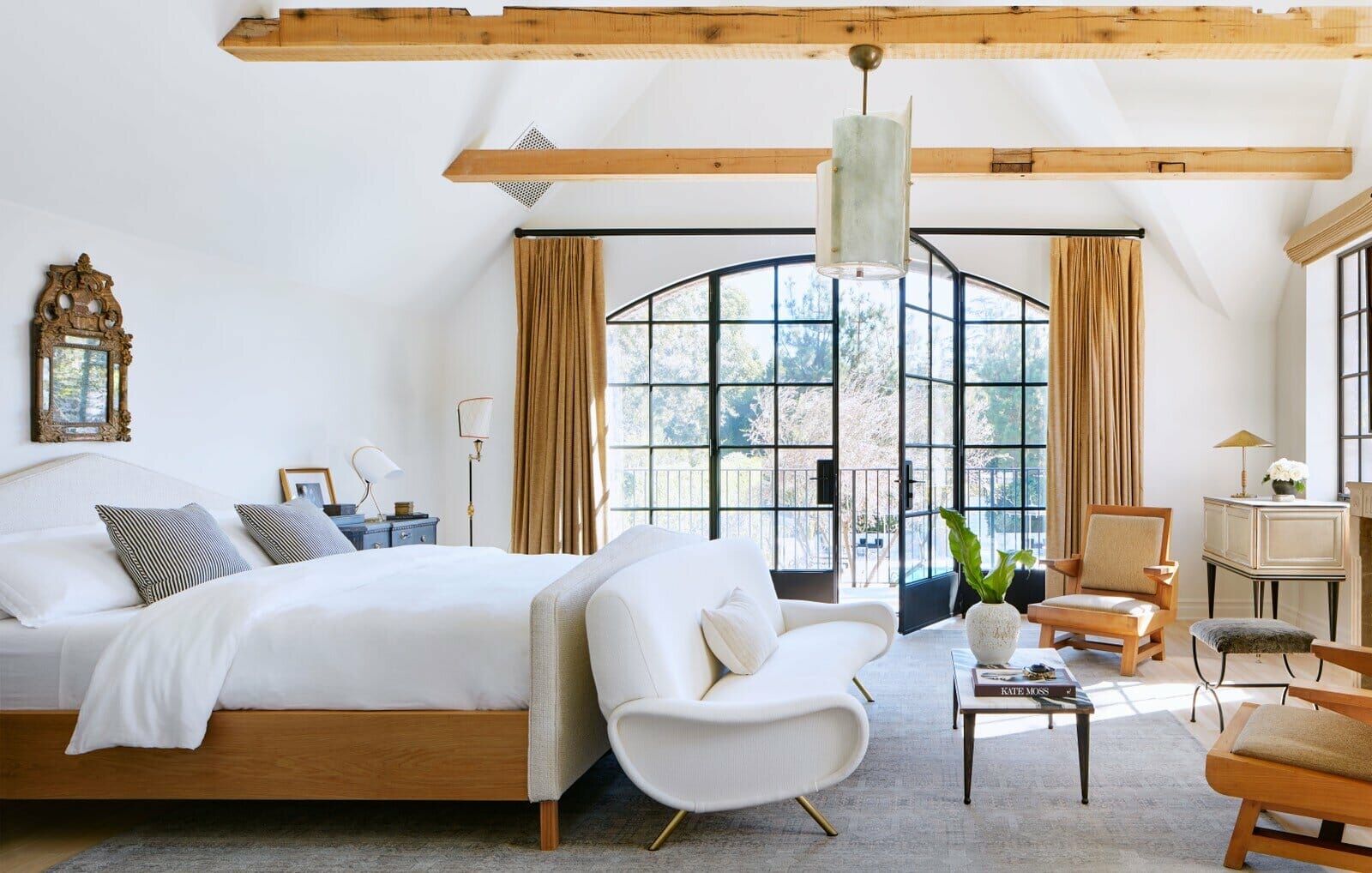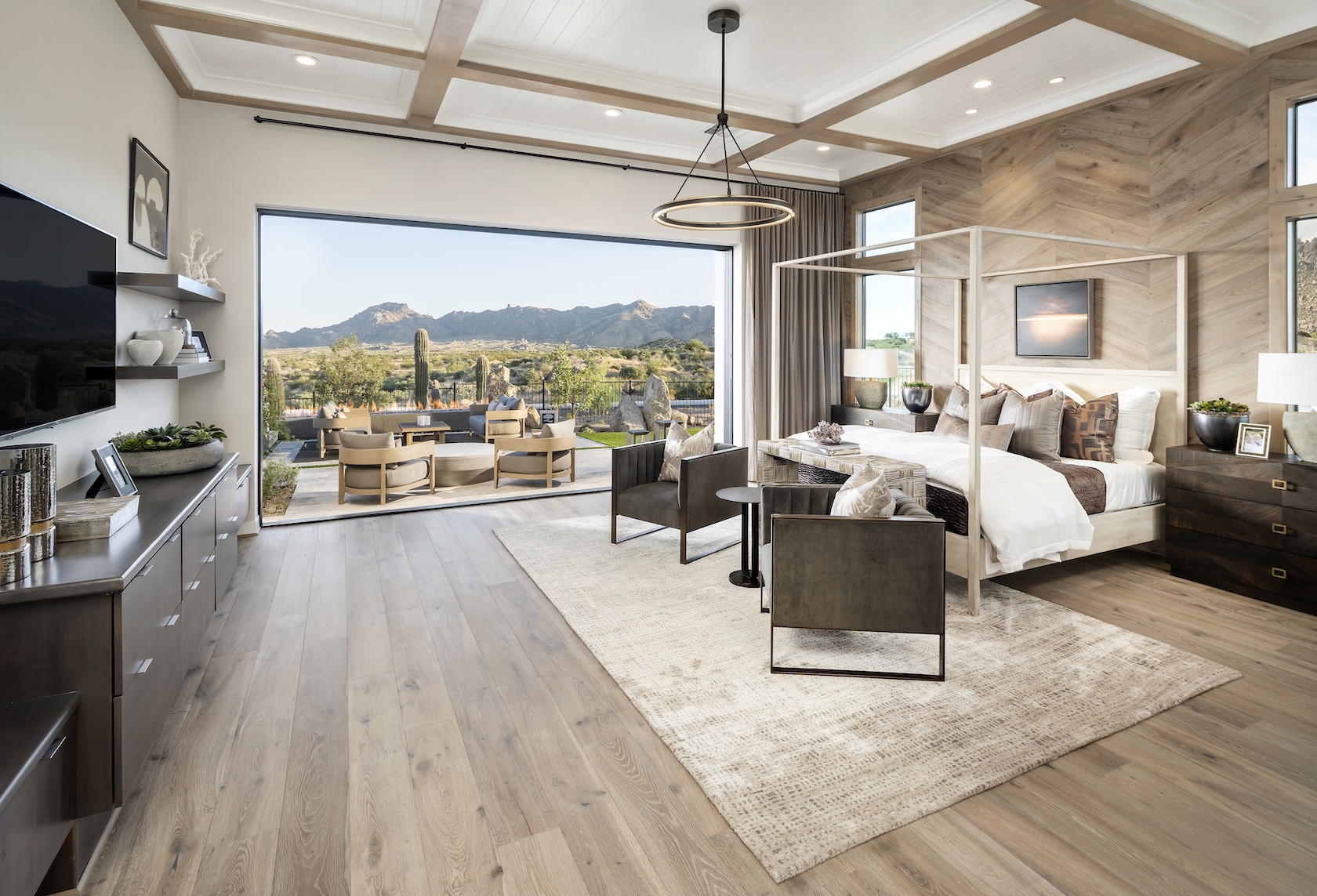The Appeal of a Third-Floor Master Bedroom: 3rd Floor Master Bedroom

A third-floor master bedroom offers a unique blend of privacy, tranquility, and often, breathtaking views. While it might seem like an unconventional choice, it can be an incredibly rewarding one for homeowners seeking a sanctuary away from the hustle and bustle of everyday life.
Advantages of a Third-Floor Master Bedroom
A third-floor master bedroom offers several advantages that can significantly enhance the quality of life for homeowners.
- Privacy and Tranquility: Being located on the top floor, a master bedroom on the third floor offers a sense of privacy and tranquility that is often difficult to achieve on lower levels. The distance from other rooms and the absence of foot traffic can create a peaceful and secluded space for relaxation and sleep.
- Panoramic Views: A third-floor master bedroom can provide stunning panoramic views of the surrounding landscape, cityscape, or even the ocean. This can add a sense of grandeur and beauty to the room, making it a truly special space to wake up in.
- Natural Light: A third-floor master bedroom often receives more natural light than rooms on lower floors. This can create a bright and airy atmosphere, enhancing the feeling of spaciousness and promoting a sense of well-being.
Disadvantages of a Third-Floor Master Bedroom
While a third-floor master bedroom offers numerous advantages, it also presents some potential drawbacks that homeowners should consider.
- Stairs: The most obvious disadvantage is the need to climb stairs to access the bedroom. This can be a significant inconvenience for individuals with mobility issues or those who prefer a more convenient layout.
- Heat and Noise: The top floor of a house is often warmer in the summer and colder in the winter due to its proximity to the roof. Additionally, noise from the roof or surrounding area can be more noticeable on the third floor.
- Accessibility: In the event of an emergency, accessing a third-floor bedroom can be more challenging than reaching a room on a lower floor. This is particularly important for individuals with disabilities or elderly homeowners.
Comparison with Other Floor Locations
Comparing a third-floor master bedroom to those on other floors reveals distinct advantages and disadvantages.
- First Floor: A first-floor master bedroom offers convenience and accessibility, especially for those with mobility issues. However, it can lack privacy and be more susceptible to noise from outside and other rooms in the house.
- Second Floor: A second-floor master bedroom provides a good balance between privacy and accessibility. It often offers more natural light than a first-floor bedroom but may not have the same panoramic views as a third-floor bedroom.
Real-Life Experiences of Homeowners
“We love our third-floor master bedroom! It’s like our own private sanctuary with amazing views of the city. We wake up to the sunrise every morning and fall asleep to the twinkling lights at night. It’s truly special.” – Sarah, homeowner
“The stairs are a bit of a challenge, especially when carrying laundry up and down. But the privacy and the beautiful views make it all worthwhile. We wouldn’t trade it for anything.” – David, homeowner
Design Considerations for a Third-Floor Master Bedroom

A third-floor master bedroom presents unique opportunities for design and functionality. It allows for breathtaking views, increased privacy, and a sense of sanctuary. However, it also necessitates careful planning to optimize space, address potential challenges, and create a comfortable and inviting retreat.
Furniture Layout and Placement
A well-designed furniture layout is crucial for maximizing space and functionality in a third-floor master bedroom. Consider the following:
- Maximize Natural Light: Position the bed to face a window, allowing for ample natural light during the day and creating a sense of openness. Avoid placing furniture in front of windows, as this can obstruct the light flow.
- Create a Focal Point: A statement piece of furniture, such as a large headboard or a luxurious armchair, can draw the eye and define the space. Place this focal point opposite the bed or in a corner to create visual interest.
- Optimize Circulation: Ensure that walkways are clear and provide ample space for movement. Avoid placing furniture too close to walls or doors, as this can hinder access.
- Incorporate Storage Solutions: A third-floor master bedroom often lacks ample closet space. Utilize built-in shelves, drawers, and storage ottomans to maximize storage and minimize clutter.
Color Palette and Design Elements
The color palette and design elements you choose can significantly impact the mood and ambiance of your third-floor master bedroom.
- Light and Airy: Opt for a light and airy color palette, such as soft blues, whites, and grays, to create a sense of spaciousness and tranquility. These colors can reflect light, making the room feel brighter and larger.
- Warm and Inviting: If you prefer a cozier atmosphere, consider incorporating warm tones like browns, yellows, and oranges. These colors can create a sense of warmth and comfort, making the bedroom feel more inviting.
- Textural Elements: Incorporate textural elements like soft rugs, plush throws, and textured bedding to add depth and interest to the space. These elements can create a cozy and inviting atmosphere.
- Statement Lighting: A statement lighting fixture, such as a chandelier or pendant lamp, can elevate the design and add a touch of elegance. Choose a fixture that complements the overall style of the bedroom.
Floor Plan Design
Designing a floor plan for a third-floor master bedroom requires careful consideration of natural light, privacy, and accessibility.
- Maximize Natural Light: Position the bedroom to maximize natural light from windows. Consider incorporating skylights or large windows to enhance light penetration.
- Privacy and Soundproofing: Ensure that the bedroom is well-insulated to minimize noise from outside. Consider using heavy curtains or blinds to block out light and noise, and choose flooring materials that absorb sound.
- Accessibility: If the bedroom is located on a third floor, consider accessibility features such as a ramp or an elevator for individuals with mobility challenges.
Practical Considerations for a Third-Floor Master Bedroom

A third-floor master bedroom offers a unique perspective and potential for privacy, but it also presents specific practical considerations. Understanding these challenges and implementing appropriate solutions can ensure a comfortable and enjoyable living experience.
Noise Insulation and Privacy
A third-floor master bedroom is more susceptible to noise from the outside and from other areas of the house. This is because sound travels upwards, making it easier for noise to penetrate a third-floor room.
- Use sound-absorbing materials: Thick curtains, carpets, and rugs can help absorb sound and reduce noise levels. Consider using acoustic panels on the ceiling or walls for greater noise reduction.
- Install double-paned windows: Double-paned windows offer better sound insulation compared to single-paned windows. They create an air gap that helps dampen noise.
- Seal gaps and cracks: Sound can easily travel through gaps and cracks in walls, doors, and windows. Use weather stripping or caulk to seal these openings.
Energy Efficiency and Heating/Cooling Costs, 3rd floor master bedroom
A third-floor master bedroom can experience temperature fluctuations more drastically than lower floors due to its exposure to the elements. This can lead to higher heating and cooling costs.
- Insulate the attic: Properly insulating the attic space above the third floor helps prevent heat loss in winter and heat gain in summer, minimizing temperature fluctuations.
- Install a programmable thermostat: A programmable thermostat allows you to set different temperatures for different times of the day, reducing energy consumption when the bedroom is unoccupied.
- Use energy-efficient appliances: Opt for energy-efficient heating and cooling systems, such as heat pumps or high-efficiency HVAC units, to minimize energy consumption and reduce costs.
Maximizing Storage Space and Creating a Functional Layout
A third-floor master bedroom may have limited space, making it crucial to maximize storage and create a functional layout.
- Utilize vertical space: Install built-in shelves, cabinets, or wardrobes to take advantage of vertical space and maximize storage capacity. Consider using a loft bed to create additional storage space underneath.
- Choose multi-functional furniture: Opt for furniture that serves multiple purposes, such as a bed with built-in storage drawers or a desk that can be folded away when not in use.
- Create a designated workspace: If you plan to work from home, create a dedicated workspace within the bedroom, even if it’s just a small desk with a comfortable chair. This helps separate work from leisure and maintain a sense of order.
3rd floor master bedroom – The third floor master bedroom is a sanctuary of tranquility, offering panoramic views and a sense of seclusion. When considering color schemes for this space, a harmonious blend of yellow, blue, and gray, as explored in yellow blue and gray bedroom , can create a serene and inviting atmosphere.
The combination of these hues promotes a sense of calm and balance, ideal for fostering relaxation and restful sleep in the master bedroom.
The third floor master bedroom, while spacious, presents a unique challenge when it comes to lighting. Creating a cozy and inviting atmosphere requires careful consideration of the right lamps, especially in a smaller space. For inspiration on stylish and functional lighting solutions, consider exploring small bedroom lamps target which offers a variety of options to enhance the ambiance of the third floor master bedroom.
